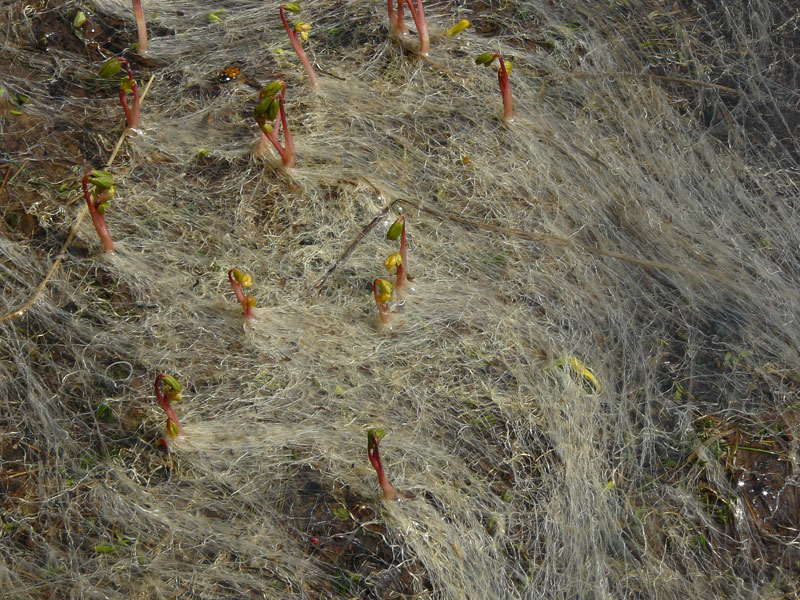
It may not be the Yeti, but in a remote region of the Russian mountains a previously unknown and entirely unique form of plant root has been discovered. Lead Scientist Professor Hans Cornelissen and his Russian-Dutch team describe this finding June 11 in Ecology Letters.
The root belongs to the small alpine plant Corydalis conorhiza and unlike normal roots, which grow into soil, they extend upward through layers of snow. Given this novel behaviour, the scientists have termed them ’snow roots’.
“This is a completely new discovery,” says Cornelissen, an associate professor of ecology at VU University in Amsterdam. “Snow roots are thus far unknown and a spectacular evolutionary phenomenon.”
The team made their discovery high up in the Caucasus Mountains, where the ground remains covered in snow for much of the year. As the snow melted at the height of summer the scientists noted that C. conorhiza plants were surrounded by a filigree network of above-ground roots, stretching uphill and to each side for around 50cm. During the spring and perhaps also winter, these roots extend into the surrounding snow and during the summer they die and decompose, which may explain how they had remained undiscovered.
C. conorhiza also possesses normal roots which anchor the plant to the ground and take up nutrients such as phosphorus and nitrogen. Cornelissen’s team hypothesise that the additional snow roots allow C. conorhiza to take nitrogen directly from the snow. Many mountain plants take up nitrogen from melted snow soaking into the ground only after snow melt. However an impenetrable ice crust prevents C. conorhiza from doing this, therefore the plant is forced to depend upon the snow roots.
Source: http://www.sciencedaily.com/releases/2009/06/090611192134.htm
No comments:
Post a Comment